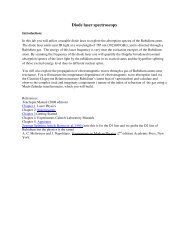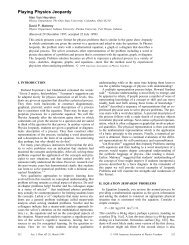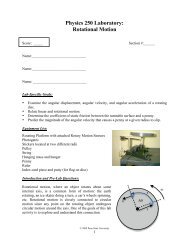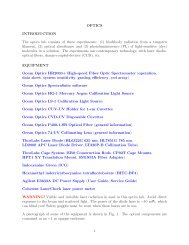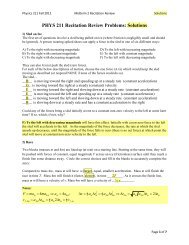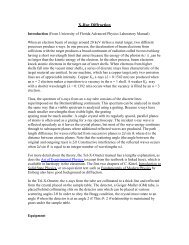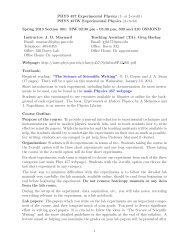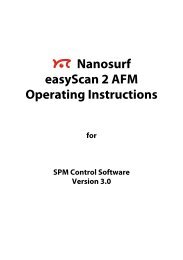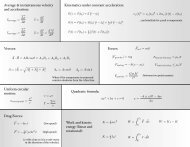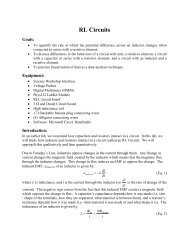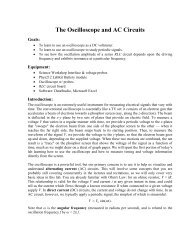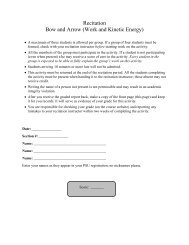Static Electricity (Lab 01)
Static Electricity (Lab 01)
Static Electricity (Lab 01)
Create successful ePaper yourself
Turn your PDF publications into a flip-book with our unique Google optimized e-Paper software.
Activity 2: A quantitative study of Coulomb’s Law<br />
Now, we will set aside the sticky tape and turn our attention to the<br />
Coulomb’s Law apparatus. Our goal with this device is again to<br />
confirm that the electrostatic force between two charged bodies is<br />
inversely proportional to the square of the distance between them.<br />
For ease of calculation, we will adopt a horizontal coordinate<br />
system in which the original, undisturbed equilibrium position of the<br />
hanging ball is used as our origin. (See Figure 2 again for the<br />
geometry involved and Figure 5 for a depiction of our x-coordinate<br />
system.) Again, we will label the horizontal position of the blockmounted<br />
ball with respect to this origin as x 1 , and the horizontal<br />
position of the suspended ball as x 2 . It will not be easy to measure<br />
either x 1 or x 2 directly, but we can relate easy-to-make<br />
measurements to the ones we want.<br />
To begin, we will measure the position of the block-mounted ball by measuring the position of<br />
one end of the block itself. (Note: in the explanation which follows, it is assumed that you will be<br />
moving the block on the left-hand side of the apparatus.)<br />
d<br />
block<br />
X<br />
−x<br />
0<br />
+x<br />
block<br />
X 0<br />
Figure 5 Finding the block’s position when the block-mounted ball is just touching the suspended ball.<br />
1. Measure the diameter d of the block-mounted pith ball and record it below:<br />
Diameter of pith balls (d): _1.25 cm________________<br />
2. Touch both pith balls (the block-mounted ball and the suspended one) with your finger to<br />
ensure that both are neutral.<br />
3. Slide the block in its groove into the apparatus, so that the block-mounted ball just barely<br />
comes into contact with the suspended ball without displacing it (see Figure 5).



